Votoms Roundtable Discussion
Votoms Odyssey was published in November 1985 by Minori Shobo, the home of OUT (the first monthly anime magazine). It occupies an important position in the history of Votoms by being the first book to expand the world beyond the anime,
The purpose of this conversation was to reunite directors Ryosuke Takahashi and Takeyuki Kanda. After co-directing Fang of the Sun Dougram (1981-1983), they went their separate ways to helm Armored Trooper Votoms and Galaxy Drifter Vifam respectively. At the time this conversation took place, the first trio of Votoms OVAs was nearly complete with The Last Red Shoulder almost ready for release. Meanwhile, Vifam was nearing its own conclusion with the last of four OVAs. (Read all about Vifam here.)
Takahashi and Kanda would reunite a few years later to make Armor Hunter Merowlink.
Attendees
1. Ryosuke Takahashi (Votoms general director)
2. Norio Shioyama (Votoms character design, animation director)
3. Takeyuki Kanda (Vifam general director)
4. Masuo Ueda (Vifam producer)
Tetsuo Daitoku (Editor-in-Chief, OUT magazine)
Moderator: Satoru Chiba (Shindosha)
Photographer: Akinori Nakajima
Director Takahashi and Director Kanda, here’s the difference!
Moderator: You two worked together on Dougram. What are the differences in your directing styles?
Kanda: Well, Ryo-chan (Director Takahashi) is the type of director who elaborates the story in detail. I try to do the same, but I get too drunk. (Laughs) I have a rough idea of where I want to go with it, but I think he decides three months before the airing, and I do it about a week before. It’s not like I’m cheating, but I even think about it while a show is on the air.
Takahashi: When you say “cheating,” are you talking about your own approach?
Kanda: Yes, my way of doing things. I try to shorten the time of suffering. I get all of the staff involved, but rather than correcting the route, I expand the story. It’s a way of eliminating the obstacles to reach the goal. In Ryo-chan’s case, I think he reads the goal right down to the tips of his thumbs.
Moderator: Mr. Ueda, how do you feel about that?
Ueda: I only have a short history with Director Takahashi, but what you just said is a decisive difference. This director doesn’t like women [characters]. (Laughs)
Kanda: He likes women.
Moderator: What about in Layzner?
Ueda: This series was a bit of a hobby of mine, so I forced myself to say, “Bring out the women!” (Laughs)
L to R: The flagpole of a yakitori shop in “Woodo Town” is interesting.
The first Armored Trooper that Director Takahashi drew.
Ryosuke Takahashi is currently putting all his energy into the production of SPT Layzner! On the day of the discussion, there was a preview of The Last Red Shoulder for the general public, so we were able to hear the real voices of the fans.
Takahashi: Today, there was a preview of The Last Red Shoulder in Ginza. It was a general preview, but looking at the people who came, there were a lot of men. The president of Toshiba Visual Soft also came to the screening, and I was surprised to see how many people showed up. He was again surprised by the power of anime. Another thing that surprised me was, “It’s all men.” (Laughs) Also, there were some questions from the audience. One of the questions was, “Why did you include Ypsilon and Fyana?” (Laughs) “Why can’t it just be a man’s world?”
Shioyama: I thought we were providing a service.
Takahashi: Of course, that’s not everyone’s opinion. Children will say what is easiest to express in words. That’s why I assume that my true feelings are in a slightly different place.
Moderator: Did that fan mean that a male world doesn’t need female characters?
Takahashi: I don’t know.
Shioyama: Apart from fans, Takahashi is not great at creating female characters, is he?
Takahashi: No, I generally don’t understand women.
Shioyama: That’s why he doesn’t want to show them unless it’s necessary. It’s like a lack of service spirit.
Takahashi: That’s why we did everything we could this time. Even so, there were times when people said, “I don’t need the last Coconna scene,” and I was like, “Don’t you understand what a favor that was? But it’s not just me who’s not great at portraying women. Mr. Shioyama is the same. (Laughs)
Shioyama: I can’t draw them in a very sexy way. (Laughs) But being bad at it has nothing to do with liking or disliking it. (Takahashi nods)
Takahashi: I was also surprised at the age range of the audience. I don’t know about “animation,” and I’m 50s, so I don’t blame them, but the age range was higher than that of Dougram. Dougram fans were junior high schoolers, but today there were only high school and college students. (Laughs)
Moderator: How was Dougram in terms of mecha?
Takahashi: To me, a robot never looks like a smart vehicle. It just looks like a heavy thing that walks around with a thud, thud, thud. It ended up being the same with Dougram.
Kanda: It was almost an obstacle. (Laughs)
Takahashi: Mr. Okawara must have been angry with Mr. Kanda. He said, “Please don’t leave my mecha lying around all the time.” (Laughs)
Kanda: Tied to a log. (Laughs)
Inset: Norio Shioyama is currently very busy with key animation for Arion, which will be released in March 1986.
Sketches: The world of Votoms by Mr. Shioyama, image illustrations
Takahashi: In the case of Director Yoshiyuki Tomino, he brings a sense of speed and buoyancy to his mecha. In our case, there is only a sense of, “It’s just like a civil engineering machine.”
Kanda: I think that’s a good thing. It’s a symbolic existence rather than a convenience.
Shioyama: I think Dougram was the first to have a sense of needing to keep a robot oiled up. I think Sunrise’s robot line changed a lot with that work.
Kanda: For me, Gundam is still a great work. I don’t know what Ryo-chan thought about it, but I thought it would be impossible to surpass it. We tried to put some ingenuity into showing another kind of mecha work.
Takahashi: Because you’re a hobbyist. It’s my philosophy that mecha have to be this way. But I don’t have any concrete idea that I like this kind mecha or that I want to create that kind of battle scene. I’m never go near plamodels. (Laughs) I’m told, “Someone wants it this way,” and that’s what I do. In my case, I absolutely need someone who can verbally convey it and execute it. For example, I need someone who can tell me that this is more like a civil engineering machine than an airplane. I do nothing but talk. Mr. Kanda described me earlier, but that’s a lie! (Laughs) I don’t calculate that far into the future. Neither of us works that hard. I’m just talking about how we compare.
Ueda: The readers don’t know. (Laughs) They think we work hard, so don’t tell them.
Shioyama: Ueda-kun is the one who knows the most.
Ueda: It’s a matter of degrees. (Laughs)
L: Takeyuki Kanda has finished production of the fourth Vifam OVA and is now preparing for his next work.
R: Masuro Ueda, producer of Layzner. He came to the venue after Mr. Takahashi to check the lyrics of the theme song for the show, but was forced to participate in the conversation.
Takahashi: I’ve found that it ends up biting you in the ass if you skip work. For example, if you check someone’s storyboards at 7:00 in the evening and you know it’s bad, when the person asks you what needs to be fixed, you’re not sure what to say. There may be someone waiting to go out for drinks, so if I go out without telling the artist what to do, I’ll end up fixing the storyboard myself the next day. (Laughs) If I had looked at it a little earlier and had that person fix it, I wouldn’t have to do more work myself.
Anyway, there was a time when I realized in my bones that if I took it easy and stretched out the decision-making, more things would bite me in the ass. Kanda, you’re the same as you always were. I suffer as my work continually increases without coming to a decision until the last day. This is the difference between Kanda and me. (Mr. Ueda is nodding his head repeatedly.)
I’m trying to decide more and more things in advance. That’s why I’m working with Mochizuki of Sunrise Studio 3 (Layzner group), Ueda-kun, and Sunrise Studio 1 (Layzner group). I think they have a totally different perception of me than Yamamoto and Hasegawa from Studio 1 (the former Votoms group). (Laughs) However, I think Mr. Kanda will start making more of his decisions later and later. (Laughs)
Kanda: I remember when Mr. Shioyama once told me, “The production is in trouble, so please don’t mess around with it.” But he didn’t say it in a mean way.
Shioyama: You can say that now because you know what it’s like when I’m mean to you. (Laughs) Back then, I was in a studio for the first time. I wondered why they’d all run away when production people came in with tearful faces. There was a time when I would tell them at the bar, “You guys are so mean to me.” Yes, both directors did that kind of thing. But, as you would expect from a veteran, he had a good grasp of what it takes to make a film, and the people around him recognized that and said, “Well, nothing else to be done about it.”
Kanda: I couldn’t go drinking unless I convinced myself that I was inviting Shioyama-san out for a drink. Well, we did some really hard drinking. (Laughs)
Takahashi: Kanda has a more distinctive way of making things. With me, it depends on who I team up with. Rather than reflecting my own style in the work, I change the way I do things depending on the staff. That’s why a new project starts with deciding on the producer and the staff.
However, Kanda, being a pain in the ass, says, “I don’t care who it is.” Then you can end up with a terrible person. It’s hard to explain your way of thinking to someone who you don’t agree with. So, in the end, I have no choice but to postpone the decisions and do it myself. In his case, he ends up with a work that has a strong personal flavor. In my case, I don’t want to go through the trouble, so I choose people who I know are capable of doing what I want them to do.
With Votoms and Galient now over, Layzner is about to begin. As far as the production staff is concerned, they are all people I can trust with my work. We were just laughing about how many of my revisions didn’t make it into the storyboards. I’m like, “It’s too bad so many of my shots didn’t get in.” (Laughs) Since the director went to the trouble of setting everything up, there was nothing for me to do. But when I look at Kanda’s storyboards, I see that he does a lot of work on it. I think to myself, “Was he always this hardworking?” (Laughs)
Kanda: It depends on the work. For something like Vifam, I think it’s important to have a sensibility that isn’t written in the script. But it takes me four or five hours to explain, “This is what I think!” so instead I just tell them to watch two or three episodes and see what they think. Only someone who has been immersed in the work will be able to get the sensibility of it. As the person who orders it, I know I have no choice but to do it myself.
Votoms vs Vifam
Daitoku: Let me say this from a fan’s point of view; after you both made Dougram together, Votoms and Vifam can be said to have good symmetry. Were you aware of each others’ work?
Takahashi: There was no special awareness of each other.
Kanda: That’s right. However, I was concerned that Director Tomino would say that my work was similar to Director Takahashi’s work. There was no point in doing the same thing, so we exchanged information two or three times over drinks, saying, “I’m doing this kind of work.” I tend not to do hard science fiction. I was grateful to have the principal of “the computer,” so I was indebted to it. But I studied a lot. (Laughs) I was worried about it at first. I wondered how I could create something new. But once I got past that point, the rest came naturally. I apologize for the trouble. (Laughs)
Daitoku: Speaking as someone who creates an anime magazine, it’s very helpful to have works that are the opposite of what we’re used to. Fans were born after the Gundam boom, and those who wanted more than that went to Votoms, and the younger generation, who are new to the market, have taken to Vifam. So, as a magazine, we have more targets. But girls didn’t become fans. (Laughs)
Takahashi: Is it the same with Vifam?
Daitoku: We published Vifam Perfect Memory. Most of the readers were boys, and they were about an average of 12 years old. Our magazines used to target 15~16 year olds, 17 at the highest. I regretted that I had made a mistake in setting the price. We should have made it cheaper.
Shioyama: I guess boys are more interested in anime.
Daitoku: At first, there was an almost equal number of boys and girls. But the number of female fans is gradually decreasing.
Kanda: Maybe it’s because they aren’t interested in “robot things.”
Various images of Armored Troopers by Mr. Shioyama. After this image was fixed, Mecha Designer Kunio Okawara began his work.
Daitoku: Girls are attracted to so-called “beautiful,” “villainous,” and “tragic” characters. I think that’s the reason we have not seen more of Mr. Nagahama’s work since the Combattler V and Voltes V series. I think it’s that simple.
Kanda: I’m embarrassed to say it, but the character Meuller in Vifam was created for the sake of ratings. (Laughs) Now that I think about it, I wish I hadn’t done that.
Takahashi: That kind of dirty spirit gave birth to both Meuller and Ypsilon. (Laughs) Ypsilon’s nudity in The Last Red Shoulder was not well-received by fans. That sort of thing seems to be a foreign object to Votoms.
Daitoku: Also, girls tend to graduate from manga. Even after boys graduate from shonen manga, they move on to seinen gekiga. But girls have recently started to read ladies’ comics, which are for readers 20 and older. In the same way, it seems that tastes shift from one magazine to the next, and that they don’t seem to be drawn back to the previous one.
Shioyama: But what do you think? I think this is suitable for girls.
Takahashi: Well, I wonder.
Kanda: I don’t really think about gender.
Daitoku: Recently, boys are also attracted to girls’ works such as Creamy Mami.
Moderator: I think Vifam, for example, received fan letters directly from girls.
Ueda: Girls are very diligent. I think it’s an expression of their temporary emotional attachment to the work and their desire to somehow share the atmosphere.
Kanda: But you know, what I found a little creepy was that when I read the fan letters, the characters were described as if they were flesh and blood. For example, “I’m done with dinner, Rodey.” (Laughs) When it was Amuro (Gundam), or Kouji Kabuto (Mazinger Z), you’d never get a letter like that. They’re like close friends or brothers. I wondered if it was me who was the cause of these blind fantasies. I felt sort of bad about that.
Daitoku: That’s called a 2-dimensional complex. There are quite a lot of them.
Takahashi: That’s the difference in age groups. Votoms didn’t really attract that type of person. There were many types who saw it as a story and commented on it calmly. Some said, “I was thrilled because I felt as if they were talking about me.”
1. The earliest image of Chirico (the main character)
2. Chirico at the time the image was solidified. At that time, it was tentatively titled The Warriors.
3. Early draft of Coconna
4. Early draft of Vanilla
5. Female boss of the enemy organization drawn around the same time
6. Early draft of Phantom Lady
What are the roots of Votoms?
Daitoku: I heard that Votoms was inspired by Blade Runner. Chirico also resembles the main character Deckard (played by Harrison Ford), doesn’t he?
Shioyama: It’s more like Hoshi Hyuma [main character of Star of the Giants], with that haircut. I was told by the sponsor that the main character of an anime should have long hair. (Laughs) The reason I was able to insist, “It has to be this way!” was because I had seen Harrison Ford’s cropped hair.
Takahashi: In Votoms, I consciously incorporated the atmosphere of various movies. Blade Runner, 2001 A Space Odyssey, and so on. I wanted to incorporate Blade Runner, Burst City, Damnation Alley, and Mad Max into the messed-up world of Woodo. For the Kummen episodes, I used Apocalypse Now and The Deer Hunter to explain it to the staff. I would say, “This is what it’s like.” In the end, it was not so much to incorporate the moments, but rather to create the mood.
Chirico is like a Vietnam War vet. I thought that if he came home after the war and was told that all he had done was for nothing, he’d feel really empty. I also wanted to draw a connection between this and the children who are on the rails of life right now. If you ask today’s children, “Why do you study?” they’ll answer, “To get into a good school or a good company.” They are unquestionably on the rails of life. It would be a big problem if they lost their footing.
In fact, I don’t think there’s a single person in this world who is free of accidents. I think their sense of frustration is as great as Chirico’s. I was trying to parallel that in my work. So, at the time, this work was about the frustration and rehabilitation of the protagonist, who was unquestioningly put on the rails (treatment for reintegration into society). I just said it was a story. (Laughs)
Shioyama: Chirico is actually a man with many human weaknesses who gets through many things with his fighting instincts alone. But he’s much more than I thought he would be, and he’s gone beyond rehab. I didn’t expect him to be like this when I first created the character. (Laughs)
Moderator: When you first started the project, the story was about a battling player who travels from place to place, wasn’t it?
Takahashi: I like the movie Junior Bonner. I was wondering if it would be possible to have a robot in a small world like that. I don’t have the confidence to make a story like a big naval battle in space. So I replaced the horse in Junior Bonner with a robot.
I thought it would be interesting to make a story about a boy soldier who’s kicked out of the army after the war, and in order to earn a living, he performs an elaborate war re-enactment for money. So I came up with the idea of the main character traveling around the country with a special robot on a trailer. There was another movie called Route 66 (Laughs). I got the idea for the first Votoms from those two movies, Route 66 and Junior Bonner.
It was a small story at first. But then Soji Yoshikawa came along. The guy who doesn’t agree. (Laughs) It was either win or lose. It was hard to tell who talked more. We talked for about five hours. I spent so much time on the phone that my ear hurt. While talking with him, we came up with the skeleton. Then he said, “Okay, let’s go with that.”
Shioyama: At first, there was a stronger connection between Chirico and the robot.
Takahashi: That’s right. After all, although he may have hated it, he spent a certain amount of time in his robot. He felt most comfortable in that environment, even though he didn’t like it.
Shioyama: So the picture that best symbolizes Chirico is the scene of him sleeping inside the robot. It has been called “dark and gloomy,” but I didn’t think it was too dark.
Takahashi: Dark was a popular word then, wasn’t it?
Ueda: At that time, when I said to [writer] Toshifumi Takizawa, “Votoms is dark, isn’t it?” He said, “It’s not dark, it’s heavy.” (Laughs)
Chirico! Chirico? Chirico!?
Daitoku: Come to think of it, it’s rare to see you at a table like this, Mr. Shioyama.
Shioyama: Yes, it is. It happened only once when I was on Dougram.
Ueda: I pulled Mr. Shioyama out for the first time.
Daitoku: Thanks for that.
Shioyama: It took me two years and three Votoms to complete this project. I still have a very strong impression of Chirico in my mind. However, I’ve drawn dozens and dozens of illustrations of Chirico, but couldn’t make any changes in the way I draw him.
Kanda: Because he has no facial expressions.
Shioyama: Yes, he always had that vacant look in his eyes. That’s why I always end up with the same expression I drew before.
Takahashi: When we did the voice recording for the OVA this time, Hozumi Gouda [Chirico’s voice actor] got better at it. I said, “Don’t get better!” I couldn’t get that flat feeling. He said, “Well, wasn’t it like this?” I said something like, “It’s better to be a novice.” (Laughs)
Shioyama: Compared to the first Chirico, the new version [in The Last Red Shoulder] seems to be softer.
Daitoku: But Chirico is a type of character that has never been seen in anime before.
Shioyama: No, I have my own influences. Hoshi Hyuma is a good example, and Yasuhiko (Yoshikazu) had a lot of influence on me. I’ve drawn many Yasuhiko characters. But when I drew Chirico, it was a character that I’d never drawn before. It’s unbelievable that this dark-eyed man is so highly regarded. I’d like to ask you what is attractive about him.
Takahashi: Crinn of Dougram was criticized for his “sullenness” and “lack of heroism” and so on. So I changed my approach.
Shioyama: Now, I want to have Chirico’s voice come out more. In The Last Red Shoulder, I wanted more of his voice. However, the story was handled in the smartest way possible. He didn’t even play an active role. I guess that’s the appeal of Chirico, but as a writer, I felt it was not enough.
Takahashi: The studio staff said to me, “The main character is not Chirico, but Baiman.” (Laughs)
Ueda: That was also the case with Vifam. The parts that a single hero couldn’t handle were dealt with by the group. Even if I tried to make it a more turbulent and heroic story with one person as the main character, it wouldn’t work.
Kanda: During the voice recording, the actors were joking with each other, “I’m the main character! No, I am!” (Laughs)
Ueda: In the end, once a work is fully toned, it is not always what the creator wanted it to be.
Daitoku: I think because we can’t get enough of Chirico’s voice, we’re attracted to the work.
Shioyama: Yes, I guess that’s the appeal of it. I thought we should express the loneliness and tenderness that Chirico feels in this OVA, but there will be times when he wants to scream, too.
Sunrise’s smallest robot – AT!
Shioyama: Science-fiction is attractive to me as an artist. It’s a free world with no restrictions, but Takahashi doesn’t like robots…
Takahashi: I don’t like science-fiction. (Laughs)
Shioyama: But since you’ve developed so much in this world, SF is an absolute must in the anime genre.
Kanda: There are things you can only depict with SF.
Takahashi: It’s a bit annoying, but yes. I really hate mecha, and I hate SF, so I do it a lot. (Laughs)
Kanda: When I was doing Dougram, my son said to me. “Why do you make them all look like bums? I can’t watch this any more!” I guess the viewers are demanding. The protagonist should wear a pilot suit and a rank insignia. The times demanded it, didn’t they?
Shioyama: It was shocking at that time. I was asked to take over Dougram‘s character design from Mr. Kikkawa, but even though I was told, “fix it as you like,” I couldn’t do it. I had the idea in my head that the main character of an anime should look cool, but if I tried to make him cool, he’d look out of place in Dougram. So I was depressed for two or three months. But I realized that I was at a turning point for the characters of anime, and it made me realize that it’s not enough for Chirico to just be the good guy in Votoms.
Moderator: But I thought the helmet was amazing. If you cover his eyes and mouth, he has no expression.
Shioyama: If I had gone straight to Votoms without Dougram, it would have been a normal, cool costume. With Ypsilon, on the other hand, I had more trouble trying to show the eyes and mouth.
Takahashi: There is a reason for Chirico’s helmet. If a soldier wears a helmet or goggles, he no longer has a personality. I wanted to imply that the individual is lost in the mechanism of combat. So, rather, once he’s in the cockpit, you shouldn’t be able to recognize his face. Every time Mr. Shioyama said, “I don’t know who this is,” I had the courage to say, “This is fine.” But if we were doing it now, I’d be a pushover. (Laughs)
Kanda: For Vifam, I didn’t want to do that, so I put them in casual clothes. I had him [the pilot] belted in at first, but I didn’t like that, so I took it off. I felt sorry for him. In Raideen, the main character wears a lot of things on his hands when he controls the robot in the cockpit. I remember hating it because it felt like he was being tied down. So I wanted to make it look like a kid driving a car without a license.
Takahashi: The Votoms A.T. is so small that people with claustrophobia would never be able to ride in it.
Shioyama: Conversely, the atmosphere of the 4-meter robot was a big part of the appeal of this work. I was able to express a sense of fear. If Chirico had ridden on a giant robot and been invincible, I don’t think he would have become the same character. I think it succeeded because it felt like a jeep.
Takahashi: Soji Yoshikawa was the most demanding in the planning stage. He would ask, “How many meters is this robot?” When I answered, “4 meters,” he said, “What? A 4-meter robot! That’s it! That’s the solution!” He was just happy that we could get rid of the current robot trend.
Video [OVA] is very difficult
Shioyama: When you do a feature film, you have a plan in your head for how to finish the story. What about the series? Did you have any idea of how you wanted to end it?
Takahashi: I don’t know, because I haven’t done a movie before. But in the case of a TV series, there is a kind of familiarity. Once I’ve gotten to about 20 episodes, I’m confident that I can finish a series within five episodes, no matter how the story develops.
Shioyama: But there will be times when a story will expand while you’re working on it.
Takahashi: I thought I had expanded it, but I had to shorten it in the middle. With Galient, we managed to make it fit. (Laughs) But if you ask me to make a film that’s an hour and a half long, I’m not so sure.
Moderator: How about a video?
Takahashi: The Last Red Shoulder is my first video. The concept is that it’s a memory [insert episode] of a full-length TV series, so the degree of completion or cohesiveness is not as important this time. So I guess you could say it’s an unknown quantity. Today, I received a question from a fan: “What’s going to happen in the next volume?” If I have such an opportunity, I’ll make it a work with a proper beginning and end. This is just a memory. It’s a service to the fans who have seen the TV series so far.
Kanda: Everyone laughed at me, but in the fourth volume of Vifam (Kate’s Memory) I made it in such a way that if you want to see the expression on her face, you have to rewind the film. It was over the time limit by 8 minutes, and I had to cut a lot.
Takahashi: Eight minutes over. I can’t believe his nonsense. (Laughs)
Kanda: You know, the producer suddenly said, “That three-minute extra [in a previous OVA] was so well received, let’s do it again.” I said, “I’ve already made the whole 60 minutes, so I can’t do any more. I’ll have to sacrifice something else to put it in.” I wanted to do it, too (Laughs), something like an Untouchables parody. It’s a lot of work to shorten it by 8 minutes without ending up with missing parts. (Laughs)
Takahashi: I’m hanging out with the producer now, and he’s not like that. That’s a luxury in my opinion. We have the same producer, and now we’re combined in schedule and fraction.
Kanda: Ryo-chan is still in the observation stage.
Takahashi: You’ve come a long way from that stage. I wish I could do it too, such a luxury. (Laughs)
Kanda: Not really. I’ve had a number of supervisors after me say, “Is it OK if I cut it there?”
Shioyama: Do you watch videos many times?
Kanda: You have to, or you can’t edit it! (Laughs)
Shioyama: Video is a scary thing, isn’t it?
Kanda: That’s why I was so careful not to let the third OVA go over an hour and bore the audience. I was trying not to wear them out. I was made fun of, though.
Takahashi: I didn’t make fun of you.
Shioyama: (nods) He praised you.
Kanda: I was embarrassed, myself. The fourth one was more academic. That’s why it went over by 8 minutes. (Laughs)
Shioyama: It’s really difficult, isn’t it?
Takahashi: But the film is interesting.
Kanda: It’s half scary, though.
Shioyama: It’s easy if we can give each other advice. That’s why we still have to work on it. Even after 20 years of work, I can only see the bad parts. I can start to see why it was a hit, but I can’t see what I was confident about.
(End)

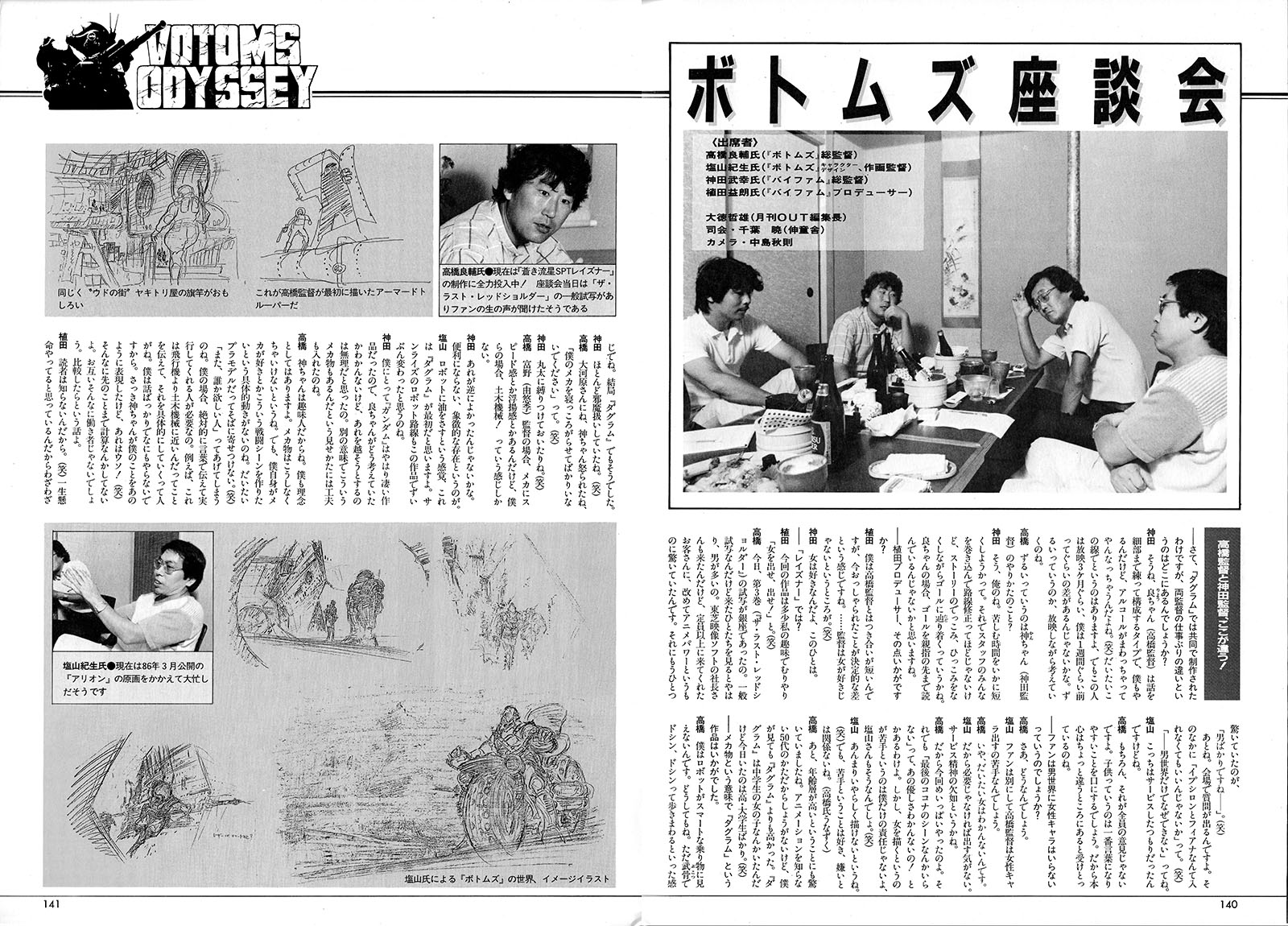
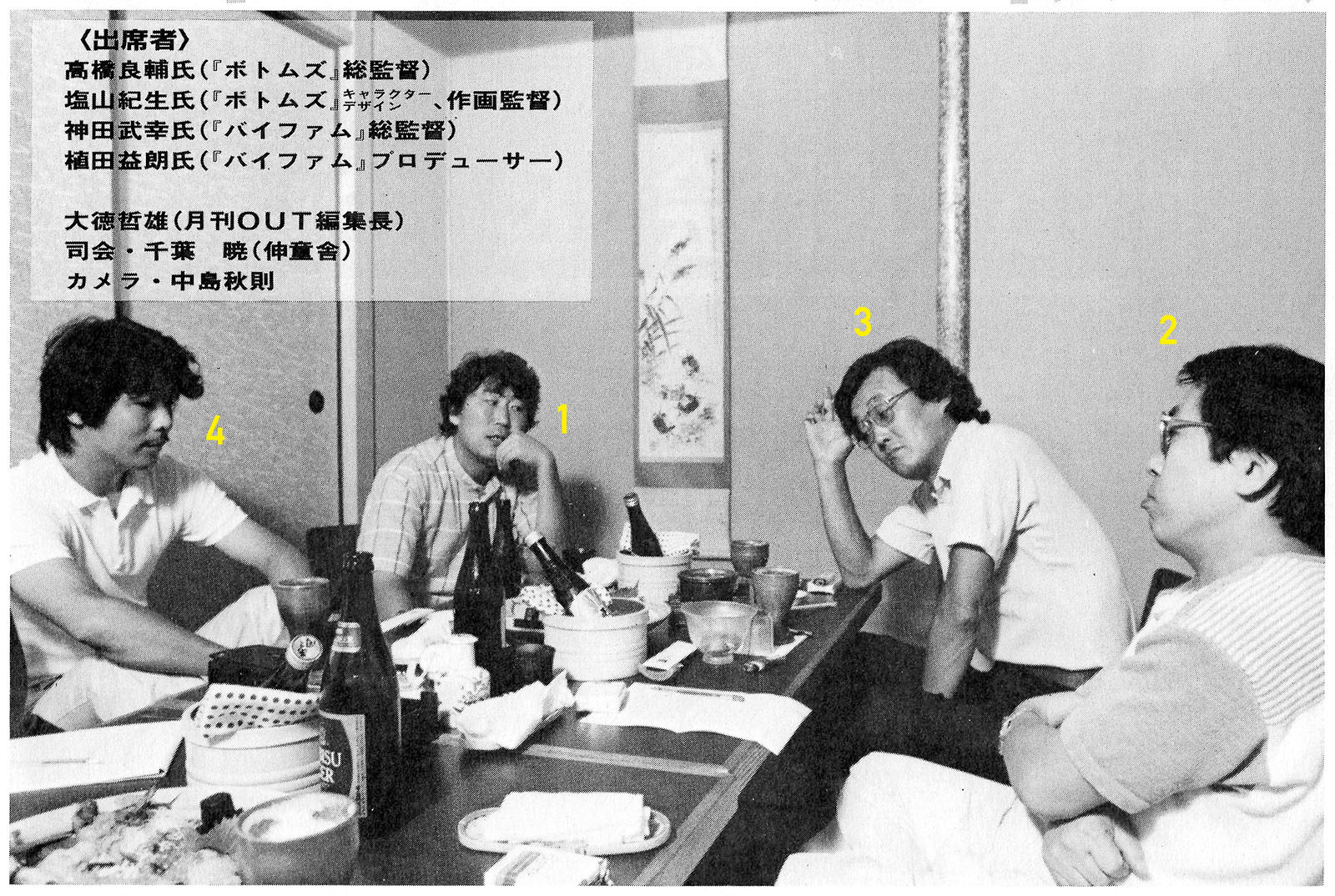

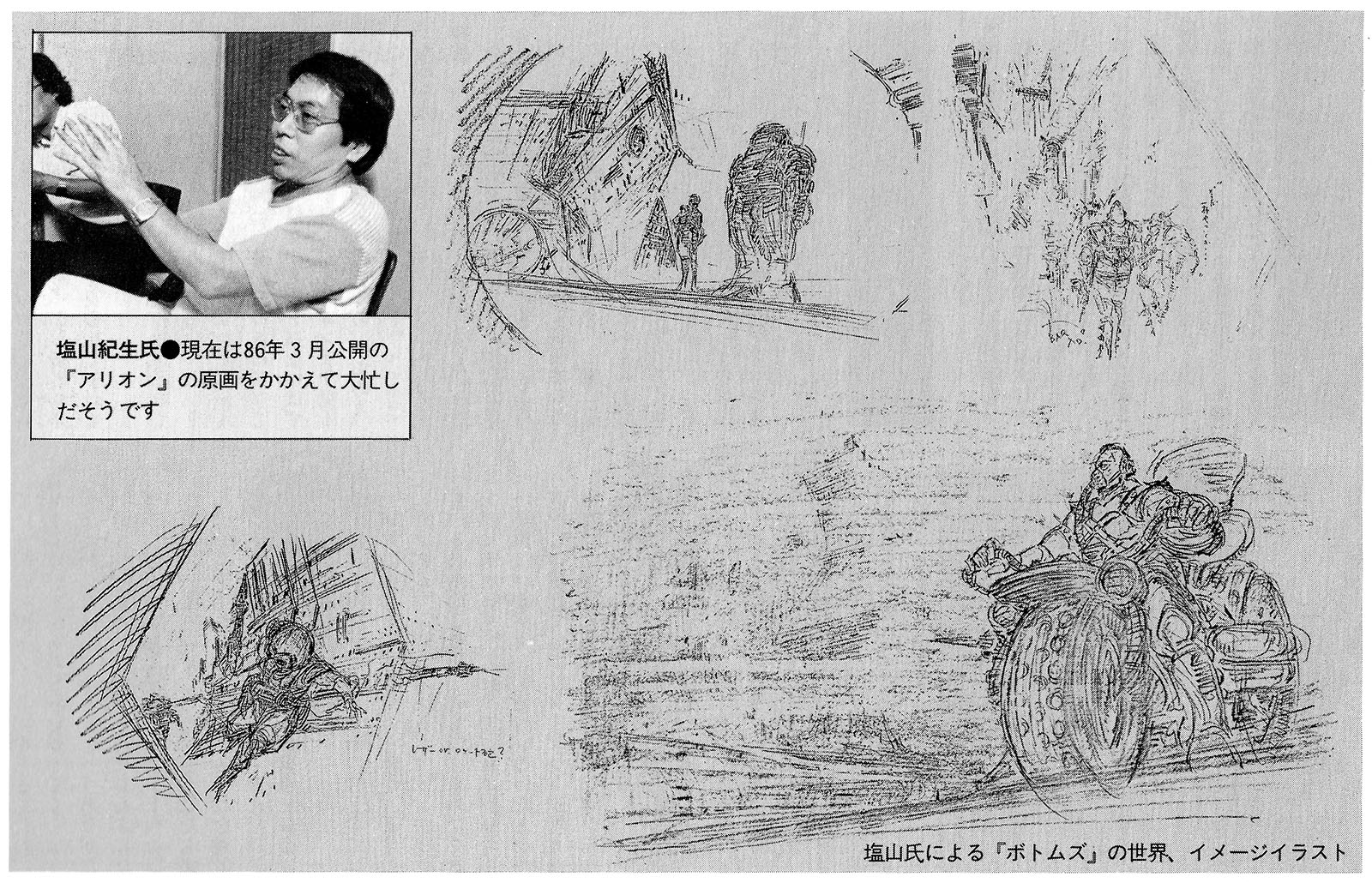
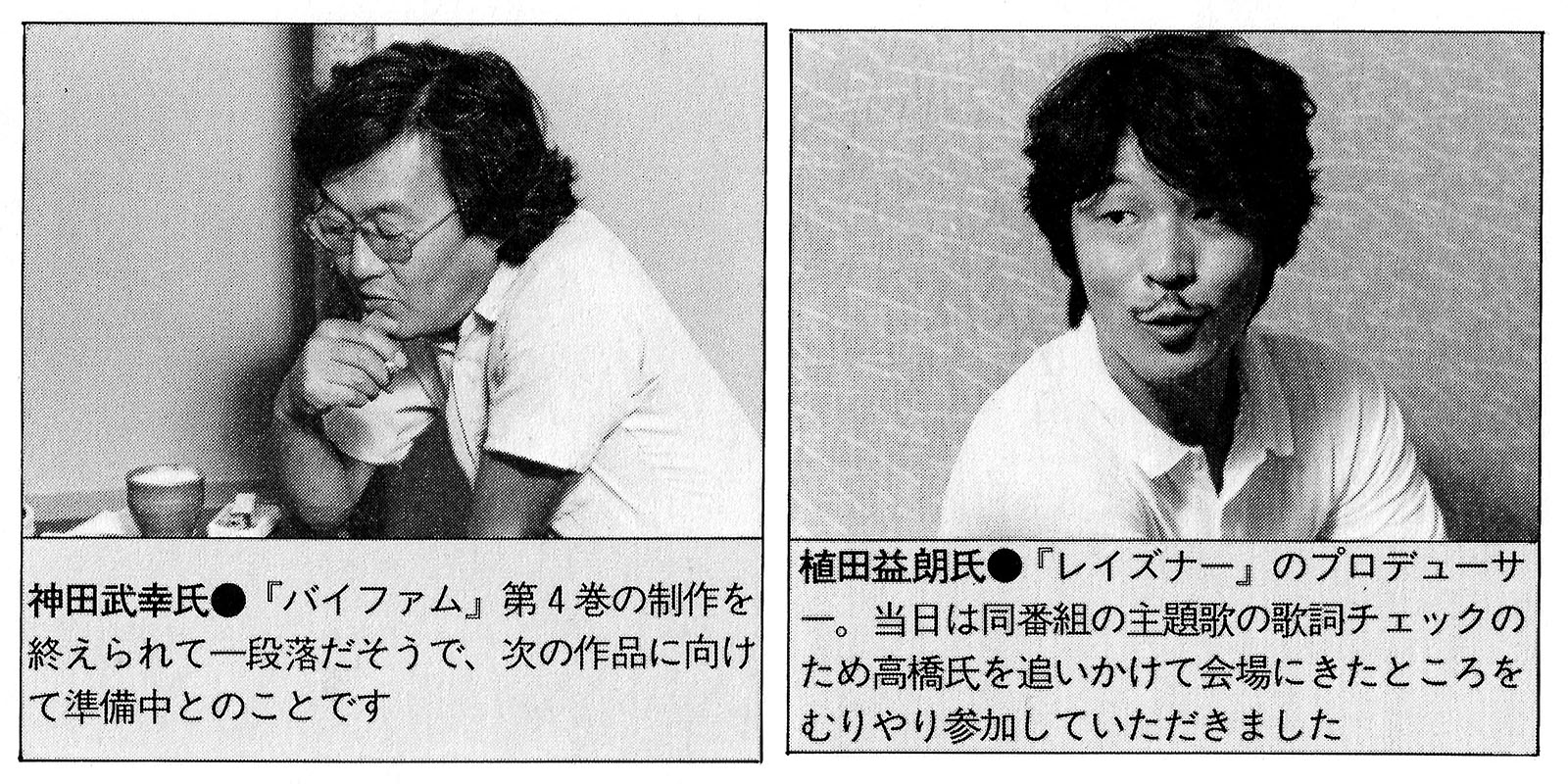
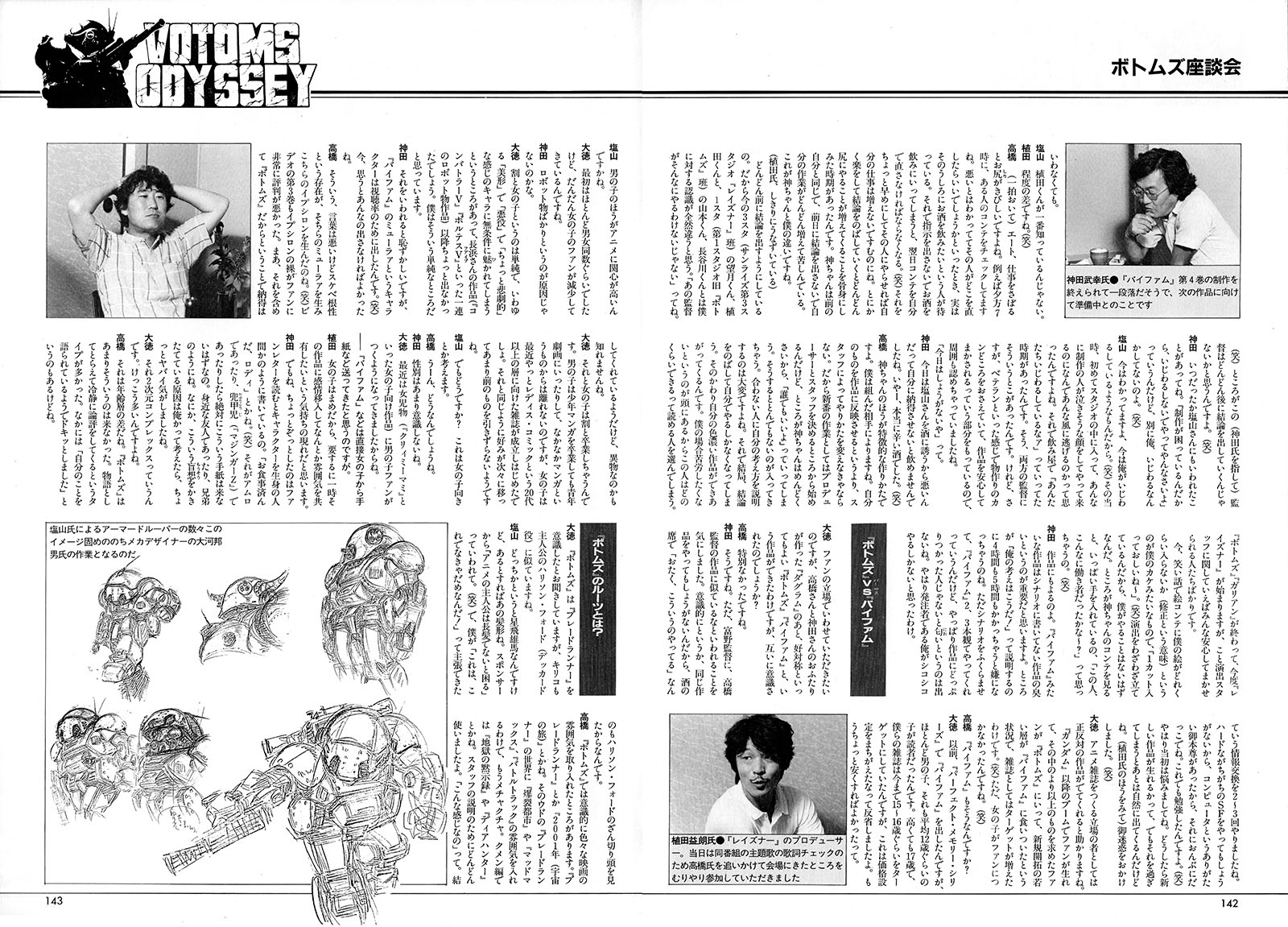
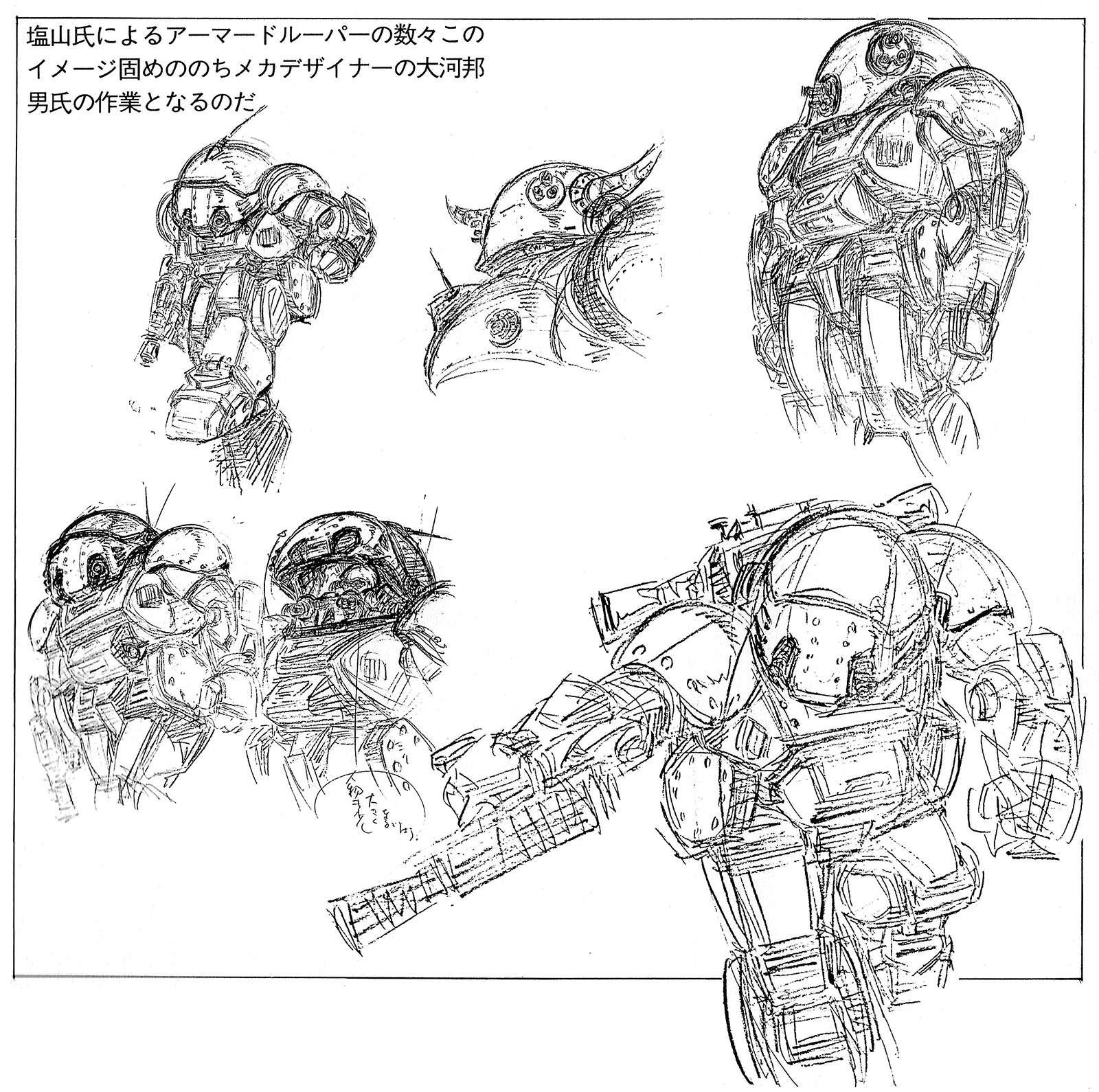
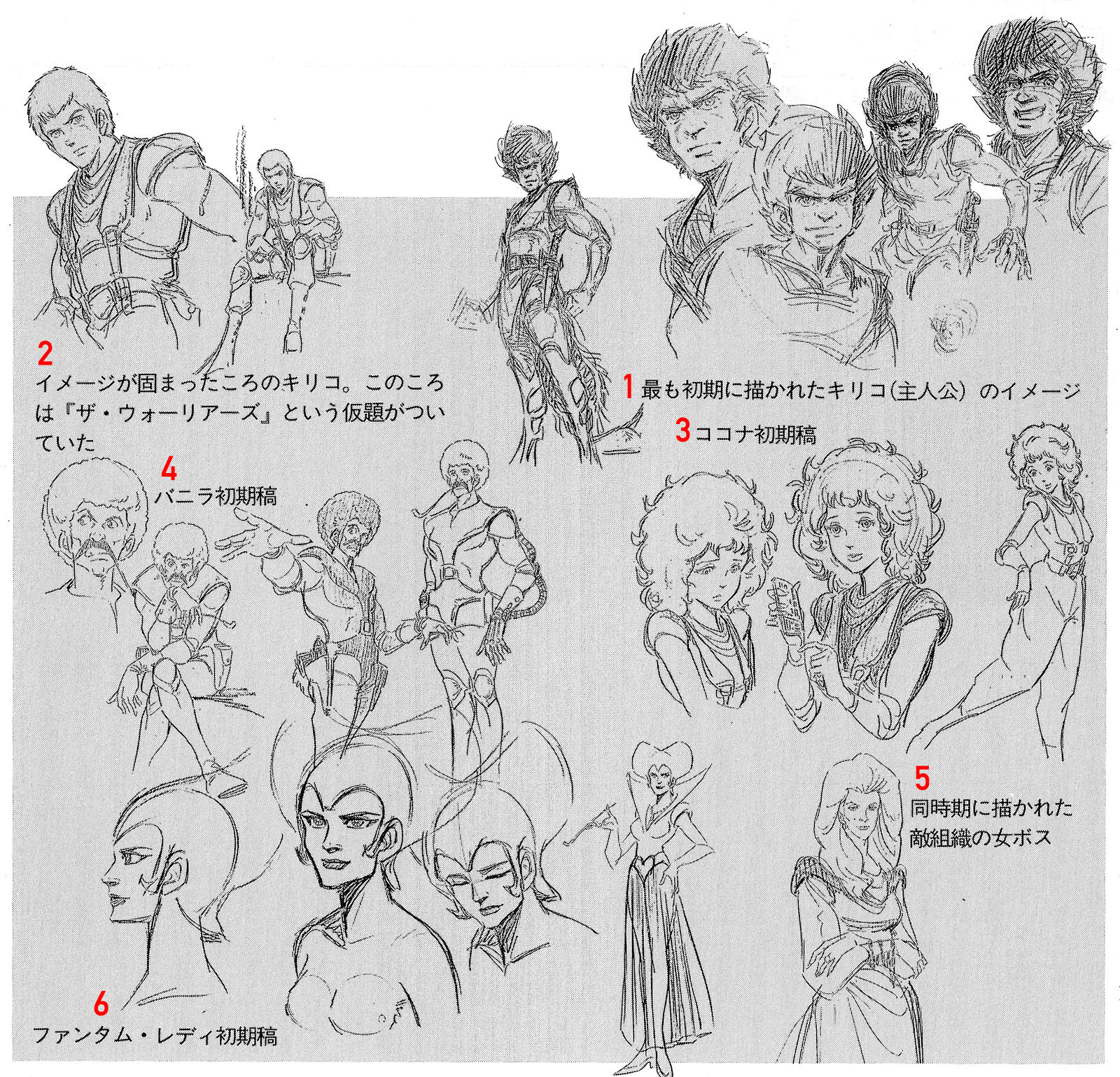
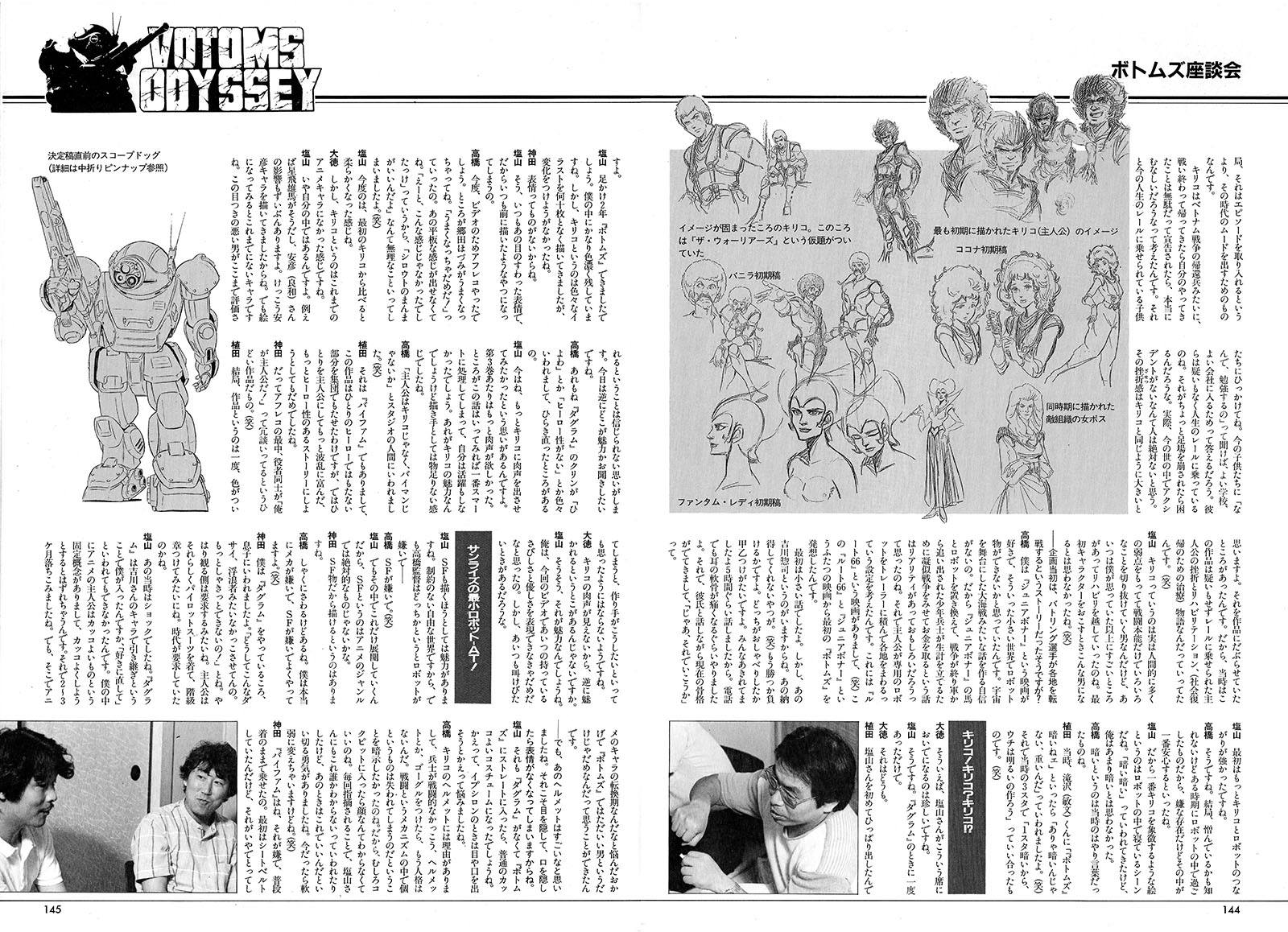
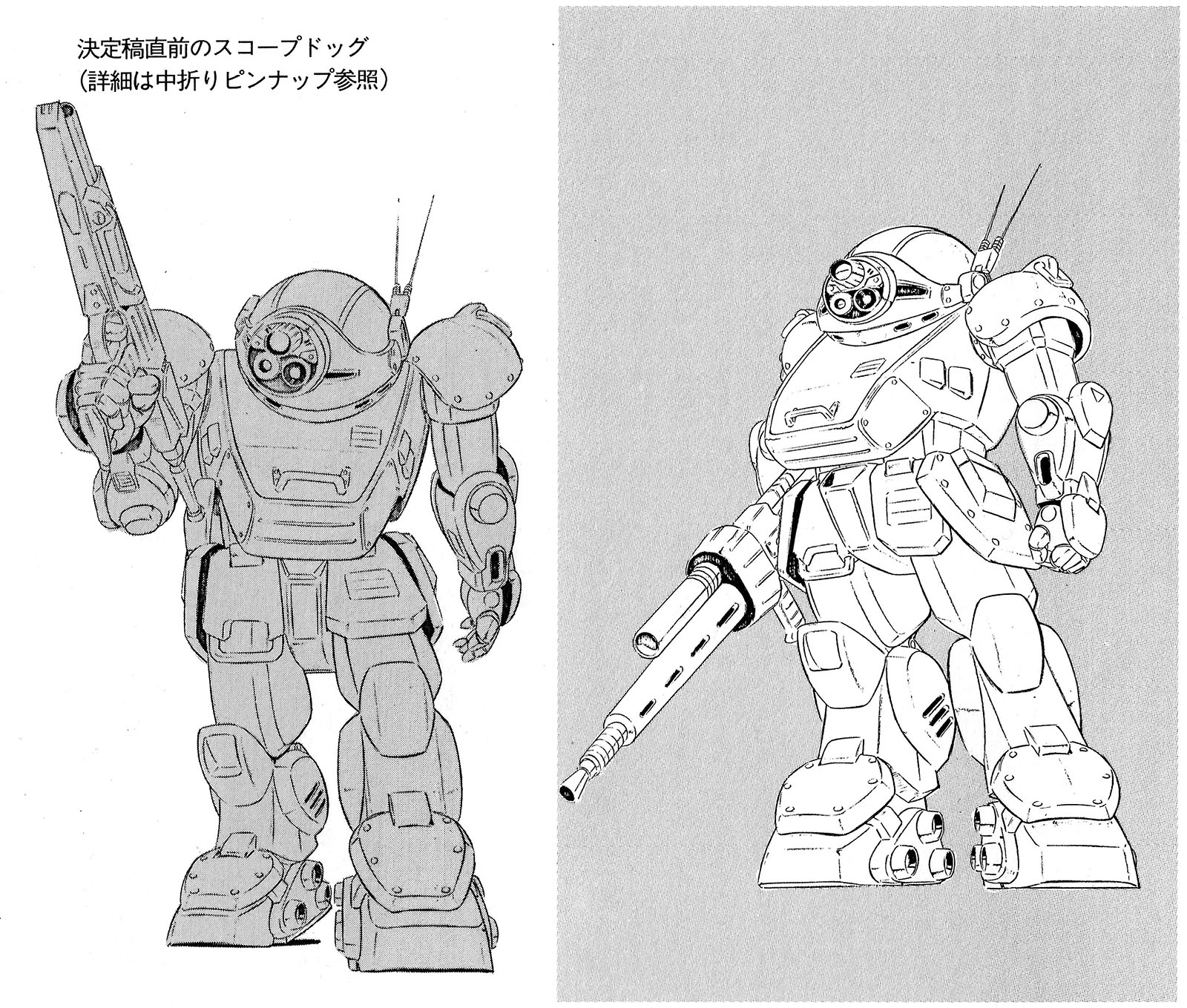
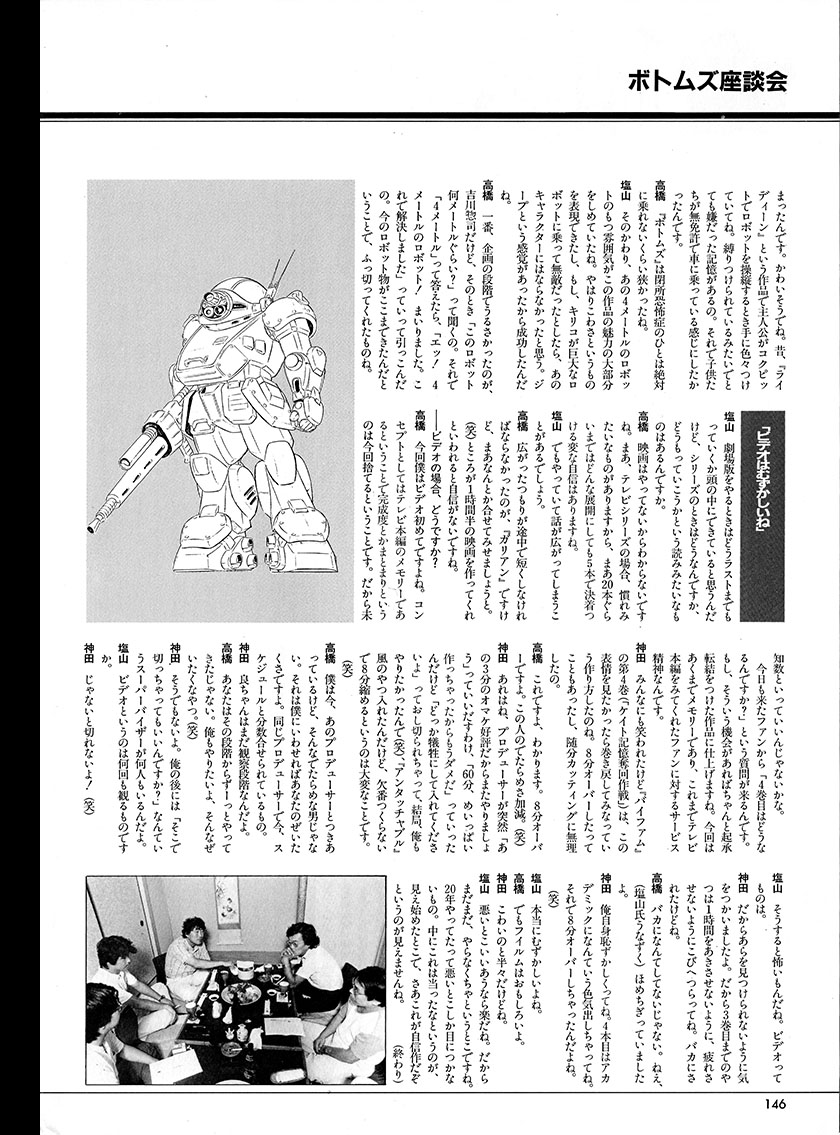
Fascinating material as usual, thank you.